Castrillón
Castrillón is a municipality in Asturias, located on the central coast. It has an area of 56.70 km² and a population of 22,361 inhabitants (in 2005). The most important population centres are the capital Piedras Blancas, Salinas, and Raíces.
Castrillón | |
|---|---|
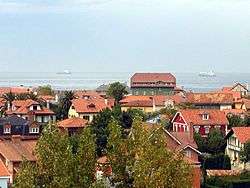 Streets in Salinas | |
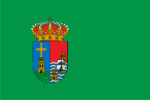 Flag  Coat of arms | |
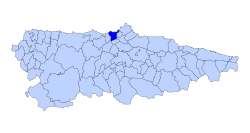 Location of Castrillón | |
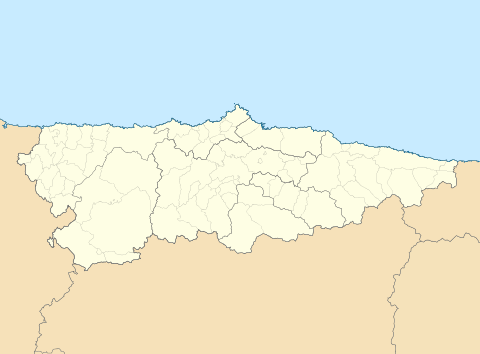 Castrillón Location in Spain  Castrillón Castrillón (Spain) | |
| Coordinates: 43°33′N 5°58′W | |
| Country | |
| Autonomous community | |
| Province | Asturias |
| Comarca | Avilés |
| Capital | Piedras Blancas |
| Government | |
| • Alcalde | Ángela Vallina (IU) |
| Area | |
| • Total | 55.34 km2 (21.37 sq mi) |
| Elevation | 434 m (1,424 ft) |
| Population (2018)[1] | |
| • Total | 22,464 |
| • Density | 410/km2 (1,100/sq mi) |
| Demonym(s) | Castrillonense |
| Time zone | UTC+1 (CET) |
| • Summer (DST) | UTC+2 (CEST) |
| Postal code | 33450, 33405 (Salinas, Raices y Coto Carcedo) y 33456-33459 |
| Official language(s) | Asturian |
| Website | Official website |
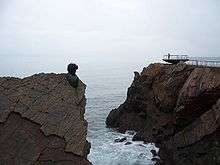
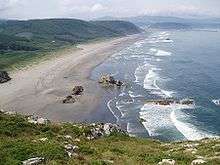
Asturias Airport is located in Castrillón. The airport is located in Anzu, parish of Santiago del Monte, municipality of Castrillón, 15 km from Avilés, 40 km from Gijón and 47 km from the regional capital, Oviedo.
Geography
Situated on the littoral plain, the county is one of the flattest areas in Asturias. Its coast is formed by a series of beaches and cliffs. For this reason, the county is known as "the county of the 7 beaches", even though there are more than seven beaches along its long coastline.
Inland, the area is characterized by the smoothness of the landscape, mainly formed by fertile valleys with a small river network that crosses the county. The altitude increases steadily towards the Southwest, with the peak in the Alto del Marqués (438 m).
Parishes
Castrillón has eight parishes (administrative divisions):
Castrillón contains seven locations that do not belong to any parish. This political division in unique in Asturias. The seven are six localities (Coto Carcedo, La Cruz de Illas, La Laguna, Miranda, Raíces Nuevo and San Juan de Nieva) and the village of San Cristóbal.
Climate
Its oceanic climate means that there is little temperature variation. It has an annual average temperature of 13 °C, a moderate summer and mild winter with frequent rain. In this way it is similar to adjacent regions.
History
The first evidence of a human presence in Castrillón is in Astur settlements from the Celtic and Roman periods. In Peñarrey, an altar with an inscription has been found, together with some pottery. There are also some silver coins in Quiloño and some other places. The earliest known written documents found date from the 9th century. Castrillón appears named as Castilione in the Liber Testamentorum of the Cathedral of Oviedo, sourced as a copy of a document from 857 AD. In that period Castrillón was part of the Alfoz of Gozón (later on it would be part of the Alfoz of Avilés); this is the origin of the first coat of arms of the county. In these documents, and others from the 10th century, there are references to the various contributions of the Kings to the Church of Oviedo, like the one dated on 921 where the donations from Ordoño II, including the Sancti Saluatoris de Petris Albis church (San Salvador de Piedras Blancas).
Castillo de Gauzón, dating to the 7th century, is also widely mentioned in those documents. This emblematic Asturian fortress was located in the Peñón de Raíces (Rock of Raices). This place was used as a prison for the rebels, and as a protection for the estuary of Avilés against the attacks of the Normans. According to tradition and written legend, the Cruz de la Victoria (Victory Cross) was forged there. Under the protection of the castle, there was a monastery that gave shelter to the orders of Santiago, San Francisco and La Merced. The inhabitants still use the bulrush and some architectonic elements in the houses built in the lands where the old monastery was.
The salt industry was very important during the Early Middle Ages, in the areas of Bayas, Naveces and Santa María del Mar.
When the Real Compañía de Minas (Royal Mining Company) arrived in 1833, they began working the coal reef of Arnao, which became the first submarine mine in Spain. It was ultimately abandoned because of the filtration of sea water through its domes. At Arnao beach you can still see the derrick used for extraction, covered with zinc panels.
The Real Compañía de Minas also worked in the foundry and elaboration of zinc and zinc byproducts. There are factories in Arnao and San Juan de Nieva. The construction of houses for their employees was the beginning of the current population centres of San Juan de Nieva, Arnao, and Salinas. At these places there are some interesting examples of 20th-century architecture.
Politics
The current mayor is Yasmina Triguero Estévez (IU-IX).
| Party/List | 1979 | 1983 | 1987 | 1991 | 1995 | 1999 | 2003 | 2007 | 2011 | 2015 |
| CD / AP / PP | 1 | 6 | 6 | 6 | 10 | 9 | 9 | 9 | 6 | 6 |
| PCE / IU-BA | 3 | 2 | 4 | 5 | 5 | 6 | 6 | 7 | 8 | 8 |
| FSA-PSOE | 6 | 9 | 7 | 8 | 6 | 6 | 6 | 5 | 3 | 3 |
| CSP | 2 | |||||||||
| C's | 1 | |||||||||
| FAC | 4 | 1 | ||||||||
| UCD / CDS | 4 | - | 4 | 2 | ||||||
| Independents | 3 | |||||||||
| Total | 17 | 17 | 21 | 21 | 21 | 21 | 21 | 21 | 21 | 21 |
References
- María Isabel Míguez Mariñas: "Aproximación a la Historia de Castrillón: De los orígenes a la Edad Media" (1998, Ayto de Castrillón).
External links
- Municipal Register of Spain 2018. National Statistics Institute.